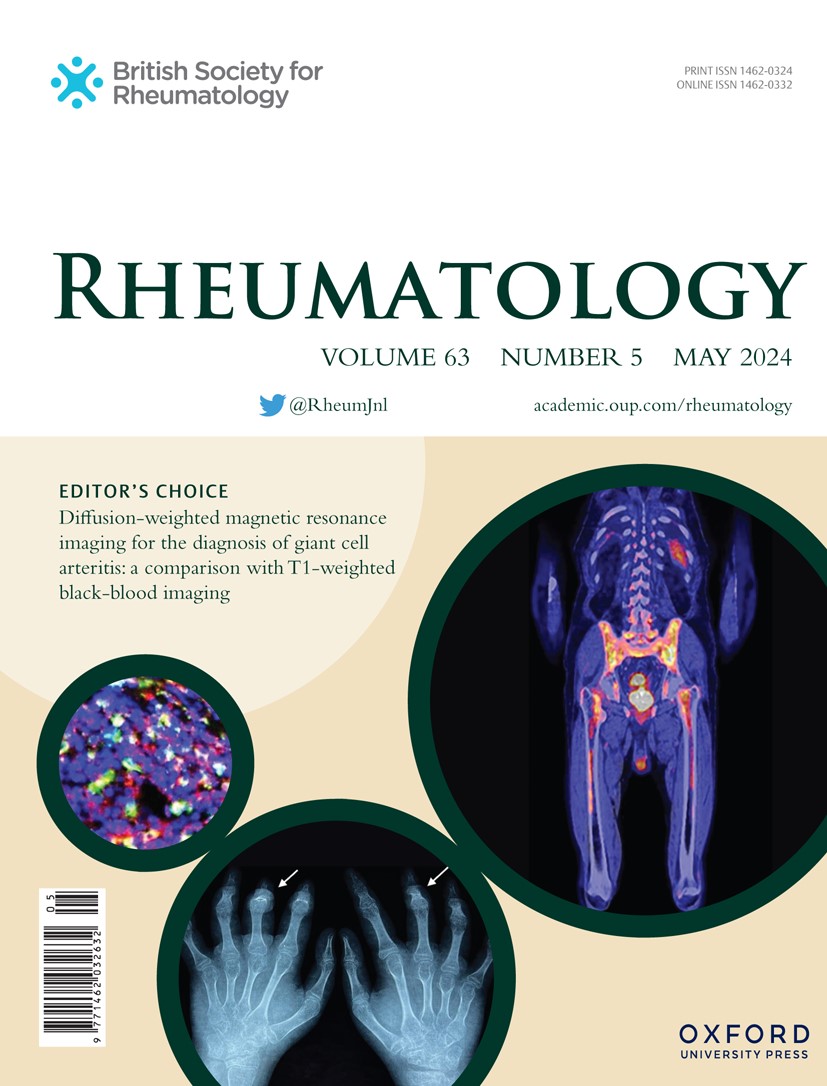狼疮性肾炎患者的静脉血栓栓塞:频率和危险因素-一项队列研究
IF 4.4
2区 医学
Q1 RHEUMATOLOGY
引用次数: 0
摘要
静脉血栓栓塞(VTE)是系统性红斑狼疮(SLE)的一种已知并发症,但缺乏专门针对狼疮肾炎(LN)的高质量研究。本研究旨在评估LN患者静脉血栓栓塞的频率,并确定其发展的危险因素。方法:我们纳入了1970年至2024年间随访的前瞻性观察队列中活检证实的LN患者。纵向监测LN发病后静脉血栓栓塞(VTE)的主要结局,并计算第一次事件发生的时间。使用时变单变量和多变量病因特异性Cox比例风险模型来确定与首次静脉血栓栓塞相关的因素,死亡被认为是一个竞争风险。结果共纳入324例患者,LN发病时平均年龄34.2岁[IQR: 25.9-43.0]。在9.9年的长期随访中[IQR: 5.0-16.4], 30例(9.3%)患者发生静脉血栓栓塞,共发生34次事件。从LN发病到第一次事件的中位时间为4.4年[IQR, 0.1, 14.1]。大多数事件是孤立的(86.7%),包括19例深静脉血栓形成(DVTs), 59.4%, 5例肺栓塞(PEs), 2例涉及其他静脉床。在多变量模型中,以下因素与VTE的发展独立相关:SLEDAI-2K评分(HR = 1.05, 95% CI: 1.01-1.10)和蛋白尿水平(HR = 1.26, 95% CI: 1.08-1.47)。结论静脉血栓栓塞可使LN病程在任何阶段复杂化。疾病活动性和蛋白尿是其发展的主要危险因素。本文章由计算机程序翻译,如有差异,请以英文原文为准。
Venous thromboembolism in patients with lupus nephritis: frequency and risk factors—a cohort study
Objectives Venous thromboembolism (VTE) is a known complication of systemic lupus erythematosus (SLE), yet there is a lack of high-quality studies specifically focused on lupus nephritis (LN). This study aimed to assess the frequency of VTE in patients with LN and identify risk factors for its development. Methods We included patients with biopsy-proven LN from a prospective observational cohort followed between 1970 and 2024. The primary outcome, VTE occurring after the onset of LN, was monitored longitudinally, and the time to the first event was calculated. Time-varying univariable and multivariable cause-specific Cox proportional hazards models were used to identify factors associated with the first VTE, with death considered a competing risk. Results A total of 324 patients were included, with a mean age of 34.2 years [IQR: 25.9–43.0] at LN onset. Over a long-term follow-up period of 9.9 years [IQR: 5.0–16.4], 30 patients (9.3%) developed VTE, with a total of 34 events. The median time to the first event from LN onset of 4.4 years [IQR, 0.1, 14.1]. Most events were isolated (86.7%), including 19 deep vein thromboses (DVTs, 59.4%), 5 pulmonary embolisms (PEs), and 2 events involving other venous beds. In the multivariable model, the following factors were independently associated with the development of VTE: the SLEDAI-2K score (HR = 1.05, 95% CI: 1.01–1.10) and proteinuria level (HR = 1.26, 95% CI: 1.08–1.47). Conclusions VTE can complicate the course of LN at any stage. Disease activity and proteinuria are the primary risk factors for its development.
求助全文
通过发布文献求助,成功后即可免费获取论文全文。
去求助
来源期刊

Rheumatology
医学-风湿病学
CiteScore
9.40
自引率
7.30%
发文量
1091
审稿时长
2 months
期刊介绍:
Rheumatology strives to support research and discovery by publishing the highest quality original scientific papers with a focus on basic, clinical and translational research. The journal’s subject areas cover a wide range of paediatric and adult rheumatological conditions from an international perspective. It is an official journal of the British Society for Rheumatology, published by Oxford University Press.
Rheumatology publishes original articles, reviews, editorials, guidelines, concise reports, meta-analyses, original case reports, clinical vignettes, letters and matters arising from published material. The journal takes pride in serving the global rheumatology community, with a focus on high societal impact in the form of podcasts, videos and extended social media presence, and utilizing metrics such as Altmetric. Keep up to date by following the journal on Twitter @RheumJnl.
 求助内容:
求助内容: 应助结果提醒方式:
应助结果提醒方式:


